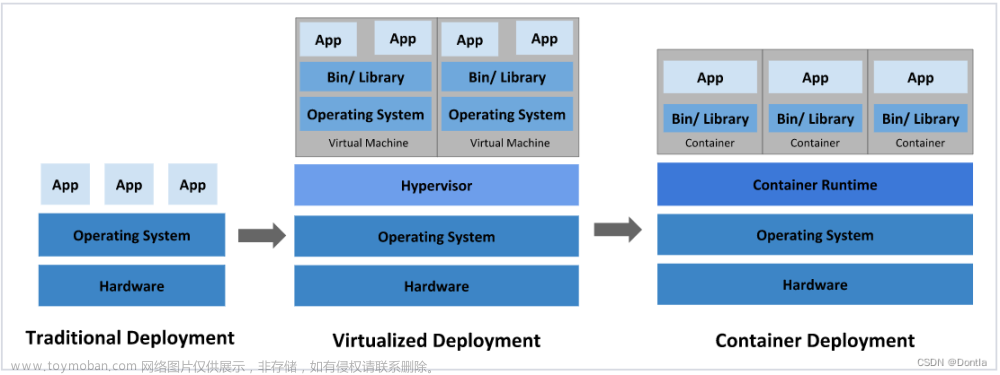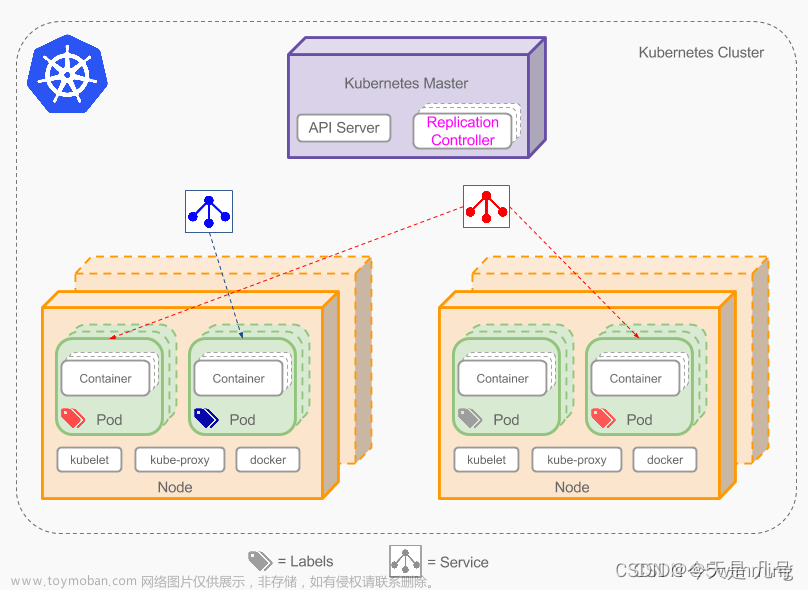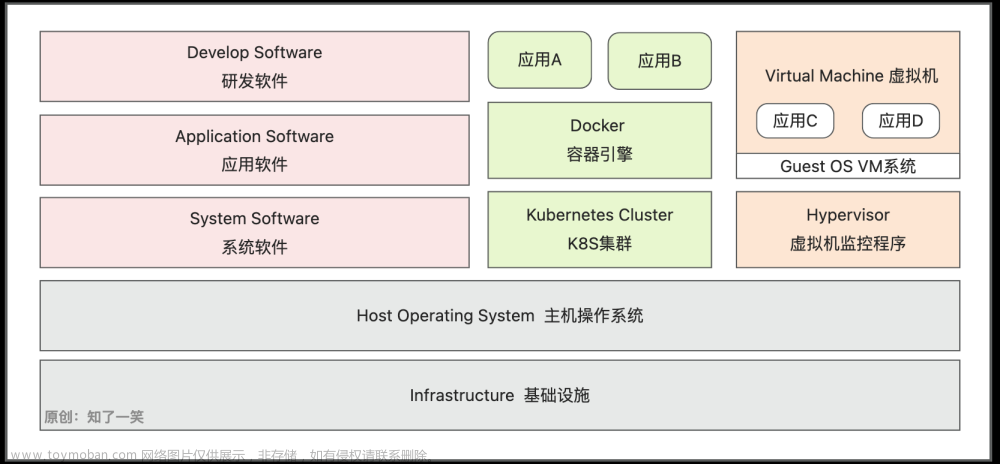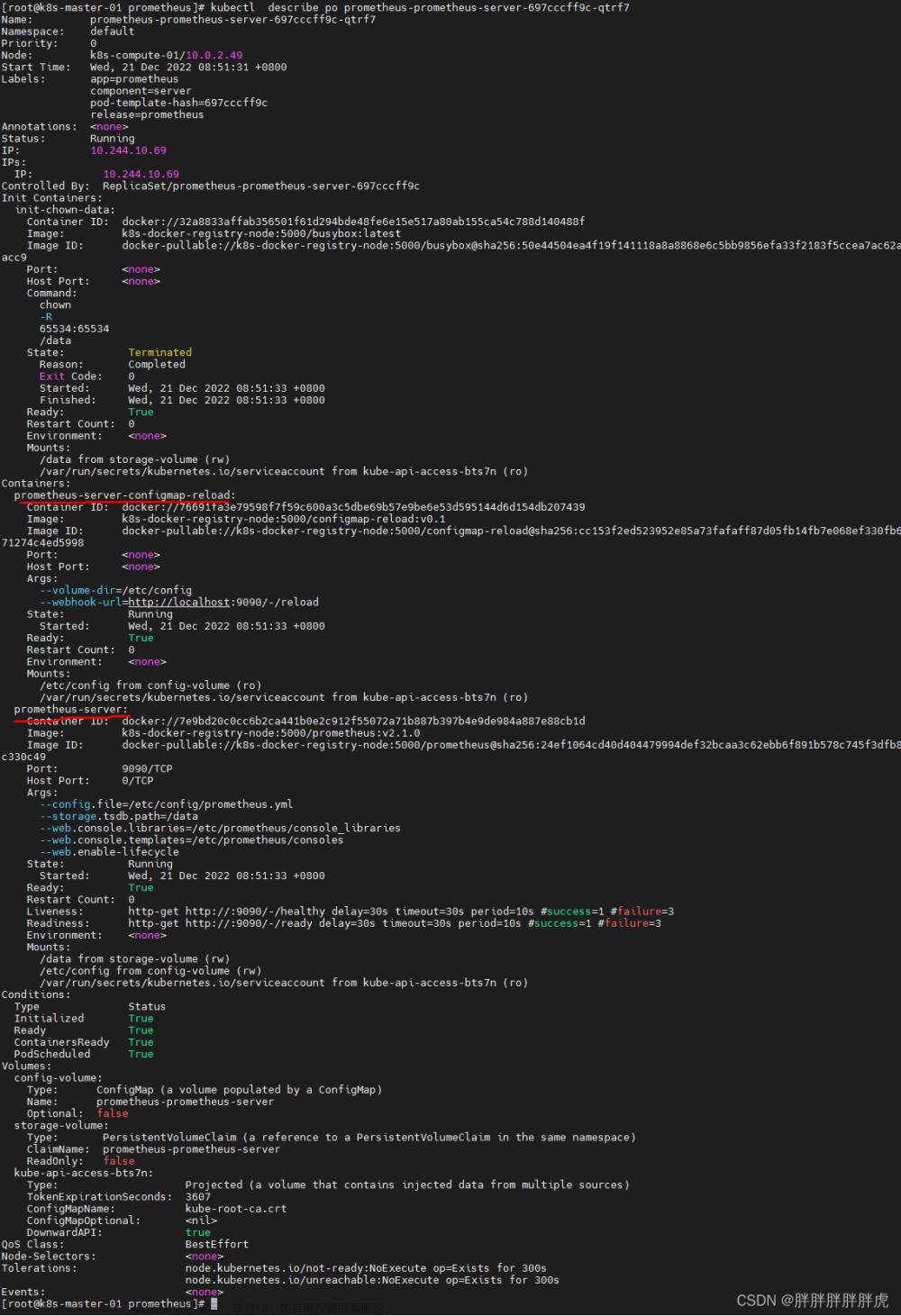//资源限制
当定义 Pod 时可以选择性地为每个容器设定所需要的资源数量。 最常见的可设定资源是 CPU 和内存大小,以及其他类型的资源。
当为 Pod 中的容器指定了 request 资源时,代表容器运行所需的最小资源量,调度器就使用该信息来决定将 Pod 调度到哪个节点上。当还为容器指定了 limit 资源时,kubelet 就会确保运行的容器不会使用超出所设的 limit 资源量。kubelet 还会为容器预留所设的 request 资源量, 供该容器使用。
如果 Pod 运行所在的节点具有足够的可用资源,容器可以使用超出所设置的 request 资源量。不过,容器不可以使用超出所设置的 limit 资源量。文章来源:https://www.toymoban.com/news/detail-638918.html
如果给容器设置了内存的 limit 值,但未设置内存的 request 值,Kubernetes 会自动为其设置与内存 limit 相匹配的 request 值。 类似的,如果给容器设置了 CPU 的 limit 值但未设置 CPU 的 request 值,则 Kubernetes 自动为其设置 CPU 的 request 值 并使之与 CPU 的 limit 值匹配。文章来源地址https://www.toymoban.com/news/detail-638918.html
官网示例:
官网示例:
https://kubernetes.io/docs/concepts/configuration/manage-compute-resources-container/
//Pod 和 容器 的资源请求和限制:
spec.containers[].resources.requests.cpu //定义创建容器时预分配的CPU资源
spec.containers[].resources.requests.memory //定义创建容器时预分配的内存资源
spec.containers[].resources.limits.cpu //定义 cpu 的资源上限
spec.containers[].resources.limits.memory //定义内存的资源上限
//CPU 资源单位
CPU 资源的 request 和 limit 以 cpu 为单位。Kubernetes 中的一个 cpu 相当于1个 vCPU(1个超线程)。
Kubernetes 也支持带小数 CPU 的请求。spec.containers[].resources.requests.cpu 为 0.5 的容器能够获得一个 cpu 的一半 CPU 资源(类似于Cgroup对CPU资源的时间分片)。表达式 0.1 等价于表达式 100m(毫核),表示每 1000 毫秒内容器可以使用的 CPU 时间总量为 0.1*1000 毫秒。
Kubernetes 不允许设置精度小于 1m 的 CPU 资源。
//内存 资源单位
内存的 request 和 limit 以字节为单位。可以以整数表示,或者以10为底数的指数的单位(E、P、T、G、M、K)来表示, 或者以2为底数的指数的单位(Ei、Pi、Ti、Gi、Mi、Ki)来表示。
如:1KB=10^3=1000,1MB=10^6=1000000=1000KB,1GB=10^9=1000000000=1000MB
1KiB=2^10=1024,1MiB=2^20=1048576=1024KiB
PS:在买硬盘的时候,操作系统报的数量要比产品标出或商家号称的小一些,主要原因是标出的是以 MB、GB为单位的,1GB 就是1,000,000,000Byte,而操作系统是以2进制为处理单位的,因此检查硬盘容量时是以MiB、GiB为单位,1GiB=2^30=1,073,741,824,相比较而言,1GiB要比1GB多出1,073,741,824-1,000,000,000=73,741,824Byte,所以检测实际结果要比标出的少一些。
示例1:
apiVersion: v1
kind: Pod
metadata:
name: frontend
spec:
containers:
- name: app
image: images.my-company.example/app:v4
env:
- name: MYSQL_ROOT_PASSWORD
value: "password"
resources:
requests:
memory: "64Mi"
cpu: "250m"
limits:
memory: "128Mi"
cpu: "500m"
- name: log-aggregator
image: images.my-company.example/log-aggregator:v6
resources:
requests:
memory: "64Mi"
cpu: "250m"
limits:
memory: "128Mi"
cpu: "500m"
此例子中的 Pod 有两个容器。每个容器的 request 值为 0.25 cpu 和 64MiB 内存,每个容器的 limit 值为 0.5 cpu 和 128MiB 内存。那么可以认为该 Pod 的总的资源 request 为 0.5 cpu 和 128 MiB 内存,总的资源 limit 为 1 cpu 和 256MiB 内存。
示例2:
vim pod2.yaml
apiVersion: v1
kind: Pod
metadata:
name: frontend
spec:
containers:
- name: web
image: nginx
env:
- name: WEB_ROOT_PASSWORD
value: "password"
resources:
requests:
memory: "64Mi"
cpu: "250m"
limits:
memory: "128Mi"
cpu: "500m"
- name: db
image: mysql
env:
- name: MYSQL_ROOT_PASSWORD
value: "abc123"
resources:
requests:
memory: "512Mi"
cpu: "0.5"
limits:
memory: "1Gi"
cpu: "1"
kubectl apply -f pod2.yaml
kubectl describe pod frontend
kubectl get pods -o wide
NAME READY STATUS RESTARTS AGE IP NODE NOMINATED NODE READINESS GATES
frontend 2/2 Running 5 15m 10.244.2.4 node02 <none> <none>
kubectl describe nodes node02 #由于当前虚拟机有2个CPU,所以Pod的CPU Limits一共占用了50%
Namespace Name CPU Requests CPU Limits Memory Requests Memory Limits AGE
--------- ---- ------------ ---------- --------------- ------------- ---
default frontend 500m (25%) 1 (50%) 128Mi (3%) 256Mi (6%) 16m
kube-system kube-flannel-ds-amd64-f4pbp 100m (5%) 100m (5%) 50Mi (1%) 50Mi (1%) 19h
kube-system kube-proxy-pj4wp 0 (0%) 0 (0%) 0 (0%) 0 (0%) 19h
Allocated resources:
(Total limits may be over 100 percent, i.e., overcommitted.)
Resource Requests Limits
-------- -------- ------
cpu 600m (30%) 1100m (55%)
memory 178Mi (4%) 306Mi (7%)
ephemeral-storage 0 (0%) 0 (0%)
重启策略
//重启策略(restartPolicy):当 Pod 中的容器退出时通过节点上的 kubelet 重启容器。适用于 Pod 中的所有容器。
1、Always:当容器终止退出后,总是重启容器,默认策略
2、OnFailure:当容器异常退出(退出状态码非0)时,重启容器;正常退出则不重启容器
3、Never:当容器终止退出,从不重启容器。
#注意:K8S 中不支持重启 Pod 资源,只有删除重建。
在用 yaml 方式创建 Deployment 和 StatefulSet 类型时,restartPolicy 只能是 Always,kubectl run 创建 Pod 可以选择 Always,OnFailure,Never 三种策略
kubectl edit deployment nginx-deployment
......
restartPolicy: Always
//示例
vim pod3.yaml
apiVersion: v1
kind: Pod
metadata:
name: foo
spec:
containers:
- name: busybox
image: busybox
args:
- /bin/sh
- -c
- sleep 30; exit 3
kubectl apply -f pod3.yaml
//查看Pod状态,等容器启动后30秒后执行exit退出进程进入error状态,就会重启次数加1
kubectl get pods
NAME READY STATUS RESTARTS AGE
foo 1/1 Running 1 50s
kubectl delete -f pod3.yaml
vim pod3.yaml
apiVersion: v1
kind: Pod
metadata:
name: foo
spec:
containers:
- name: busybox
image: busybox
args:
- /bin/sh
- -c
- sleep 30; exit 3
restartPolicy: Never
#注意:跟container同一个级别
kubectl apply -f pod3.yaml
//容器进入error状态不会进行重启
kubectl get pods -w
//健康检查:又称为探针(Probe)
探针是由kubelet对容器执行的定期诊断。
探针的三种规则:
●livenessProbe :判断容器是否正在运行。如果探测失败,则kubelet会杀死容器,并且容器将根据 restartPolicy 来设置 Pod 状态。 如果容器不提供存活探针,则默认状态为Success。
●readinessProbe :判断容器是否准备好接受请求。如果探测失败,端点控制器将从与 Pod 匹配的所有 service endpoints 中剔除删除该Pod的IP地址。 初始延迟之前的就绪状态默认为Failure。如果容器不提供就绪探针,则默认状态为Success。
●startupProbe(这个1.17版本增加的):判断容器内的应用程序是否已启动,主要针对于不能确定具体启动时间的应用。如果配置了 startupProbe 探测,则在 startupProbe 状态为 Success 之前,其他所有探针都处于无效状态,直到它成功后其他探针才起作用。 如果 startupProbe 失败,kubelet 将杀死容器,容器将根据 restartPolicy 来重启。如果容器没有配置 startupProbe, 则默认状态为 Success。
#注:以上规则可以同时定义。在readinessProbe检测成功之前,Pod的running状态是不会变成ready状态的。
Probe支持三种检查方法:
●exec :在容器内执行指定命令。如果命令退出时返回码为0则认为诊断成功。
●tcpSocket :对指定端口上的容器的IP地址进行TCP检查(三次握手)。如果端口打开,则诊断被认为是成功的。
●httpGet :对指定的端口和uri路径上的容器的IP地址执行HTTPGet请求。如果响应的状态码大于等于200且小于400,则诊断被认为是成功的
每次探测都将获得以下三种结果之一:
●成功(Success):表示容器通过了检测。
●失败(Failure):表示容器未通过检测。
●未知(Unknown):表示检测没有正常进行。
官网示例:
https://kubernetes.io/docs/tasks/configure-pod-container/configure-liveness-readiness-startup-probes/
//示例1:exec方式
apiVersion: v1
kind: Pod
metadata:
labels:
test: liveness
name: liveness-exec
spec:
containers:
- name: liveness
image: k8s.gcr.io/busybox
args:
- /bin/sh
- -c
- touch /tmp/healthy; sleep 30; rm -rf /tmp/healthy; sleep 60
livenessProbe:
exec:
command:
- cat
- /tmp/healthy
failureThreshold: 1
initialDelaySeconds: 5
periodSeconds: 5
#initialDelaySeconds:指定 kubelet 在执行第一次探测前应该等待5秒,即第一次探测是在容器启动后的第6秒才开始执行。默认是 0 秒,最小值是 0。
#periodSeconds:指定了 kubelet 应该每 5 秒执行一次存活探测。默认是 10 秒。最小值是 1。
#failureThreshold: 当探测失败时,Kubernetes 将在放弃之前重试的次数。 存活探测情况下的放弃就意味着重新启动容器。就绪探测情况下的放弃 Pod 会被打上未就绪的标签。默认值是 3。最小值是 1。
#timeoutSeconds:探测的超时后等待多少秒。默认值是 1 秒。最小值是 1。(在 Kubernetes 1.20 版本之前,exec 探针会忽略 timeoutSeconds 探针会无限期地 持续运行,甚至可能超过所配置的限期,直到返回结果为止。)
可以看到 Pod 中只有一个容器。kubelet 在执行第一次探测前需要等待 5 秒,kubelet 会每 5 秒执行一次存活探测。kubelet 在容器内执行命令 cat /tmp/healthy 来进行探测。如果命令执行成功并且返回值为 0,kubelet 就会认为这个容器是健康存活的。 当到达第 31 秒时,这个命令返回非 0 值,kubelet 会杀死这个容器并重新启动它。
vim exec.yaml
apiVersion: v1
kind: Pod
metadata:
name: liveness-exec
namespace: default
spec:
containers:
- name: liveness-exec-container
image: busybox
imagePullPolicy: IfNotPresent
command: ["/bin/sh","-c","touch /tmp/live ; sleep 30; rm -rf /tmp/live; sleep 3600"]
livenessProbe:
exec:
command: ["test","-e","/tmp/live"]
initialDelaySeconds: 1
periodSeconds: 3
kubectl create -f exec.yaml
kubectl describe pods liveness-exec
Events:
Type Reason Age From Message
---- ------ ---- ---- -------
Normal Scheduled 51s default-scheduler Successfully assigned default/liveness-exec-pod to node02
Normal Pulled 46s kubelet, node02 Container image "busybox" already present on machine
Normal Created 46s kubelet, node02 Created container liveness-exec-container
Normal Started 45s kubelet, node02 Started container liveness-exec-container
Warning Unhealthy 8s (x3 over 14s) kubelet, node02 Liveness probe failed:
Normal Killing 8s kubelet, node02 Container liveness-exec-container failed liveness probe,will be restarted
kubectl get pods -w
NAME READY STATUS RESTARTS AGE
liveness-exec 1/1 Running 1 85s
//示例2:httpGet方式
apiVersion: v1
kind: Pod
metadata:
labels:
test: liveness
name: liveness-http
spec:
containers:
- name: liveness
image: k8s.gcr.io/liveness
args:
- /server
livenessProbe:
httpGet:
path: /healthz
port: 8080
httpHeaders:
- name: Custom-Header
value: Awesome
initialDelaySeconds: 3
periodSeconds: 3
在这个配置文件中,可以看到 Pod 也只有一个容器。initialDelaySeconds 字段告诉 kubelet 在执行第一次探测前应该等待 3 秒。periodSeconds 字段指定了 kubelet 每隔 3 秒执行一次存活探测。kubelet 会向容器内运行的服务(服务会监听 8080 端口)发送一个 HTTP GET 请求来执行探测。如果服务器上 /healthz 路径下的处理程序返回成功代码,则 kubelet 认为容器是健康存活的。如果处理程序返回失败代码,则 kubelet 会杀死这个容器并且重新启动它。
任何大于或等于 200 并且小于 400 的返回代码标示成功,其它返回代码都标示失败。
vim httpget.yaml
apiVersion: v1
kind: Pod
metadata:
name: liveness-httpget
namespace: default
spec:
containers:
- name: liveness-httpget-container
image: soscscs/myapp:v1
imagePullPolicy: IfNotPresent
ports:
- name: http
containerPort: 80
livenessProbe:
httpGet:
port: http
path: /index.html
initialDelaySeconds: 1
periodSeconds: 3
timeoutSeconds: 10
kubectl create -f httpget.yaml
kubectl exec -it liveness-httpget -- rm -rf /usr/share/nginx/html/index.html
kubectl get pods
NAME READY STATUS RESTARTS AGE
liveness-httpget 1/1 Running 1 2m44s
//示例3:tcpSocket方式
apiVersion: v1
kind: Pod
metadata:
name: goproxy
labels:
app: goproxy
spec:
containers:
- name: goproxy
image: k8s.gcr.io/goproxy:0.1
ports:
- containerPort: 8080
readinessProbe:
tcpSocket:
port: 8080
initialDelaySeconds: 5
periodSeconds: 10
livenessProbe:
tcpSocket:
port: 8080
initialDelaySeconds: 15
periodSeconds: 20
这个例子同时使用 readinessProbe 和 livenessProbe 探测。kubelet 会在容器启动 5 秒后发送第一个 readinessProbe 探测。这会尝试连接 goproxy 容器的 8080 端口。如果探测成功,kubelet 将继续每隔 10 秒运行一次检测。除了 readinessProbe 探测,这个配置包括了一个 livenessProbe 探测。kubelet 会在容器启动 15 秒后进行第一次 livenessProbe 探测。就像 readinessProbe 探测一样,会尝试连接 goproxy 容器的 8080 端口。如果 livenessProbe 探测失败,这个容器会被重新启动。
vim tcpsocket.yaml
apiVersion: v1
kind: Pod
metadata:
name: probe-tcp
spec:
containers:
- name: nginx
image: soscscs/myapp:v1
livenessProbe:
initialDelaySeconds: 5
timeoutSeconds: 1
tcpSocket:
port: 8080
periodSeconds: 10
failureThreshold: 2
kubectl create -f tcpsocket.yaml
kubectl exec -it probe-tcp -- netstat -natp
Active Internet connections (servers and established)
Proto Recv-Q Send-Q Local Address Foreign Address State PID/Program name
tcp 0 0 0.0.0.0:80 0.0.0.0:* LISTEN 1/nginx: master pro
kubectl get pods -w
NAME READY STATUS RESTARTS AGE
probe-tcp 1/1 Running 0 1s
probe-tcp 1/1 Running 1 25s #第一次是 init(5秒) + period(10秒) * 2
probe-tcp 1/1 Running 2 45s #第二次是 period(10秒) + period(10秒) 重试了两次
probe-tcp 1/1 Running 3 65s
//示例4:就绪检测
vim readiness-httpget.yaml
apiVersion: v1
kind: Pod
metadata:
name: readiness-httpget
namespace: default
spec:
containers:
- name: readiness-httpget-container
image: soscscs/myapp:v1
imagePullPolicy: IfNotPresent
ports:
- name: http
containerPort: 80
readinessProbe:
httpGet:
port: 80
path: /index1.html
initialDelaySeconds: 1
periodSeconds: 3
livenessProbe:
httpGet:
port: http
path: /index.html
initialDelaySeconds: 1
periodSeconds: 3
timeoutSeconds: 10
kubectl create -f readiness-httpget.yaml
//readiness探测失败,无法进入READY状态
kubectl get pods
NAME READY STATUS RESTARTS AGE
readiness-httpget 0/1 Running 0 18s
kubectl exec -it readiness-httpget sh
# cd /usr/share/nginx/html/
# ls
50x.html index.html
# echo 123 > index1.html
# exit
kubectl get pods
NAME READY STATUS RESTARTS AGE
readiness-httpget 1/1 Running 0 2m31s
kubectl exec -it readiness-httpget -- rm -rf /usr/share/nginx/html/index.html
kubectl get pods -w
NAME READY STATUS RESTARTS AGE
readiness-httpget 1/1 Running 0 4m10s
readiness-httpget 0/1 Running 1 4m15s
//示例5:就绪检测2
vim readiness-myapp.yaml
apiVersion: v1
kind: Pod
metadata:
name: myapp1
labels:
app: myapp
spec:
containers:
- name: myapp
image: soscscs/myapp:v1
ports:
- name: http
containerPort: 80
readinessProbe:
httpGet:
port: 80
path: /index.html
initialDelaySeconds: 5
periodSeconds: 5
timeoutSeconds: 10
---
apiVersion: v1
kind: Pod
metadata:
name: myapp2
labels:
app: myapp
spec:
containers:
- name: myapp
image: soscscs/myapp:v1
ports:
- name: http
containerPort: 80
readinessProbe:
httpGet:
port: 80
path: /index.html
initialDelaySeconds: 5
periodSeconds: 5
timeoutSeconds: 10
---
apiVersion: v1
kind: Pod
metadata:
name: myapp3
labels:
app: myapp
spec:
containers:
- name: myapp
image: soscscs/myapp:v1
ports:
- name: http
containerPort: 80
readinessProbe:
httpGet:
port: 80
path: /index.html
initialDelaySeconds: 5
periodSeconds: 5
timeoutSeconds: 10
---
apiVersion: v1
kind: Service
metadata:
name: myapp
spec:
selector:
app: myapp
type: ClusterIP
ports:
- name: http
port: 80
targetPort: 80
kubectl create -f readiness-myapp.yaml
kubectl get pods,svc,endpoints -o wide
NAME READY STATUS RESTARTS AGE IP NODE NOMINATED NODE READINESS GATES
pod/myapp1 1/1 Running 0 3m42s 10.244.2.13 node02 <none> <none>
pod/myapp2 1/1 Running 0 3m42s 10.244.1.15 node01 <none> <none>
pod/myapp3 1/1 Running 0 3m42s 10.244.2.14 node02 <none> <none>
NAME TYPE CLUSTER-IP EXTERNAL-IP PORT(S) AGE SELECTOR
......
service/myapp ClusterIP 10.96.138.13 <none> 80/TCP 3m42s app=myapp
NAME ENDPOINTS AGE
......
endpoints/myapp 10.244.1.15:80,10.244.2.13:80,10.244.2.14:80 3m42s
kubectl exec -it pod/myapp1 -- rm -rf /usr/share/nginx/html/index.html
//readiness探测失败,Pod 无法进入READY状态,且端点控制器将从 endpoints 中剔除删除该 Pod 的 IP 地址
kubectl get pods,svc,endpoints -o wide
NAME READY STATUS RESTARTS AGE IP NODE NOMINATED NODE READINESS GATES
pod/myapp1 0/1 Running 0 5m17s 10.244.2.13 node02 <none> <none>
pod/myapp2 1/1 Running 0 5m17s 10.244.1.15 node01 <none> <none>
pod/myapp3 1/1 Running 0 5m17s 10.244.2.14 node02 <none> <none>
NAME TYPE CLUSTER-IP EXTERNAL-IP PORT(S) AGE SELECTOR
......
service/myapp ClusterIP 10.96.138.13 <none> 80/TCP 5m17s app=myapp
NAME ENDPOINTS AGE
......
endpoints/myapp 10.244.1.15:80,10.244.2.14:80 5m17s
//启动、退出动作
vim post.yaml
apiVersion: v1
kind: Pod
metadata:
name: lifecycle-demo
spec:
containers:
- name: lifecycle-demo-container
image: soscscs/myapp:v1
lifecycle: #此为关键字段
postStart:
exec:
command: ["/bin/sh", "-c", "echo Hello from the postStart handler >> /var/log/nginx/message"]
preStop:
exec:
command: ["/bin/sh", "-c", "echo Hello from the poststop handler >> /var/log/nginx/message"]
volumeMounts:
- name: message-log
mountPath: /var/log/nginx/
readOnly: false
initContainers:
- name: init-myservice
image: soscscs/myapp:v1
command: ["/bin/sh", "-c", "echo 'Hello initContainers' >> /var/log/nginx/message"]
volumeMounts:
- name: message-log
mountPath: /var/log/nginx/
readOnly: false
volumes:
- name: message-log
hostPath:
path: /data/volumes/nginx/log/
type: DirectoryOrCreate
kubectl create -f post.yaml
kubectl get pods -o wide
NAME READY STATUS RESTARTS AGE IP NODE NOMINATED NODE READINESS GATES
lifecycle-demo 1/1 Running 0 2m8s 10.244.2.28 node02 <none> <none>
kubectl exec -it lifecycle-demo -- cat /var/log/nginx/message
Hello initContainers
Hello from the postStart handler
//在 node02 节点上查看
[root@node02 ~]# cd /data/volumes/nginx/log/
[root@node02 log]# ls
access.log error.log message
[root@node02 log]# cat message
Hello initContainers
Hello from the postStart handler
#由上可知,init Container先执行,然后当一个主容器启动后,Kubernetes 将立即发送 postStart 事件。
//删除 pod 后,再在 node02 节点上查看
kubectl delete pod lifecycle-demo
[root@node02 log]# cat message
Hello initContainers
Hello from the postStart handler
Hello from the poststop handler
#由上可知,当在容器被终结之前, Kubernetes 将发送一个 preStop 事件。
到了这里,关于【 K8S 】 Pod 进阶的文章就介绍完了。如果您还想了解更多内容,请在右上角搜索TOY模板网以前的文章或继续浏览下面的相关文章,希望大家以后多多支持TOY模板网!











